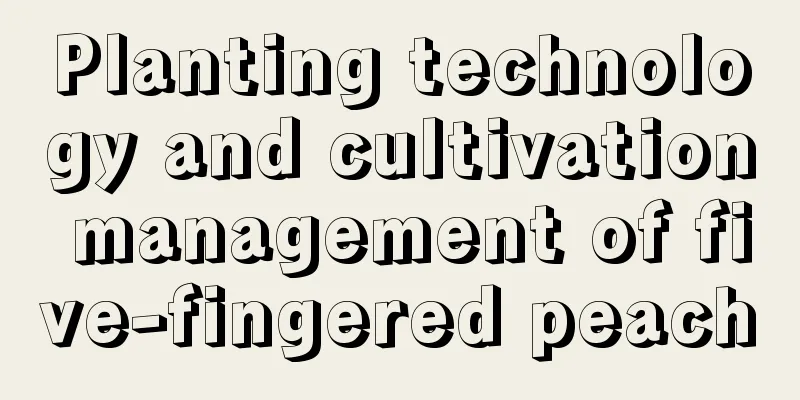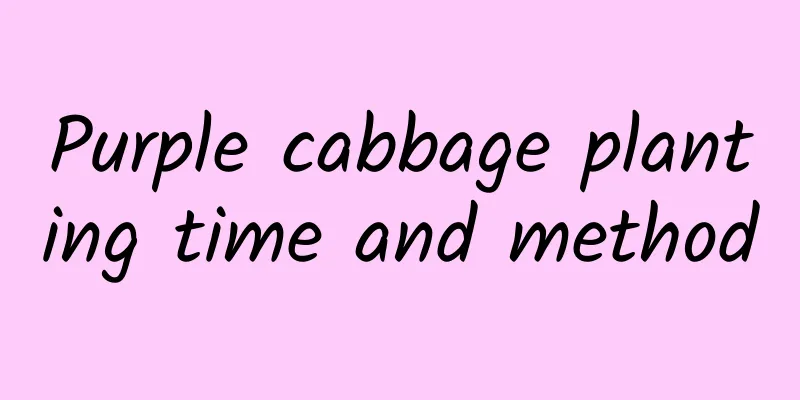Planting technology and cultivation management of five-fingered peach

|
Five-fingered ginseng , also known as five-clawed dragon, southern flower, and wild astragalus , is a precious Chinese medicinal material . With the continuous expansion of the traditional Chinese medicine market, the cultivation of five-fingered peach has gradually become an agricultural industry with development potential. So what are the planting techniques and cultivation management of five-fingered peach? Let’s learn more about it below. 1. Site selection and land preparation The planting site should be a sunny slope with deep, fertile, well-drained and humus-rich soil. When preparing the land, the soil should be deeply plowed, generally to a depth of about 30-40 cm, and holes should be dug at a spacing of 50×70 cm between rows and plants. Use 2-3 kg of well-rotted soil or manure as base fertilizer, apply it into the holes, and mix it evenly with the fine soil. 2. Breeding method Can be propagated by seeds. Select mature, plump seeds free of pests and diseases, store them in sand to accelerate germination, and then sow them after the seeds germinate. It can also be propagated by cuttings. Cut mature branches with a thickness of 1.5-2 cm from a healthy and pest-free mother plant, cut them into 15-20 cm long cuttings for cuttings. 3. Planting at the right time In March and April, when the temperature exceeds 15℃, choose a cloudy or sunny afternoon for transplanting. Place healthy and disease-free seedlings into the holes, cover with soil and compact it, water them enough to help them take root, and continue watering until they turn green (except on rainy days). If it rains during this period, pay attention to drainage. 4. Intertillage and weeding After planting, you should frequently loosen the soil and weed, and try to do manual weeding as much as possible. When the seedlings are 30 cm tall, carry out the first tillage and weeding. In the future, depending on the growth of weeds and soil compaction, inter-row cultivation and weeding should be carried out 3-4 times a year. 5. Water and fertilizer management After planting, be sure to water the plants in time to keep the soil moist. In rainy seasons, be sure to drain stagnant water to prevent the seedlings from dying. In terms of fertilization, it is generally possible to combine tillage and weeding with the application of decomposed human manure and urine, 2500-3000 kg per mu. 6. Pest and disease control The main damage to the five-fingered peach is the leaf roller. During the larval stage, you can spray with a 1000-fold diluted solution of 75% phoxim or a 1000-fold diluted solution of 50% DDT emulsifiable concentrate. 7. Harvesting and processing The five-fingered peach can usually be harvested 2-3 years after planting. When harvesting, dig out the roots, remove impurities, wash and cut into small sections or slices, and dry them in the sun or at low temperature to preserve the medicinal effects and aroma. In general, as people's health awareness increases, the market demand for five-fingered peach is increasing, and due to years of digging, wild resources are becoming increasingly scarce. Therefore, the development of artificial cultivation of five-fingered peach has good prospects, and its planting and management techniques must be mastered well.
|
<<: How to deal with insects in lucky bamboo?
>>: How to plant trumpet creeper?
Recommend
If lotus roots are not harvested in one year, will they still grow in the second year? (Is lotus root harvested once a year or for many years?)
If lotus roots are not harvested this year, will ...
The difference between yacon and sweet potato, yacon picture
1. Appearance Difference Yacon is a plant of the ...
Kumquat Growth Environmental Conditions and Characteristics
Kumquat Growth Environmental Conditions and Requi...
How long does the rose bloom last?
1. Flowering period Roses can bloom every month f...
Hyacinth Flower Language
1. Flower Language Hyacinth has many flower meani...
Is Gardenia poisonous?
No poison Gardenias are not poisonous! The leaves...
Kumquat planting methods and management
Soil requirements Potted kumquats prefer loose, f...
Disease and Pest Control of Rhododendron australis
Main diseases Leaf swell There are three main dis...
Can the Kalanchoe be repotted in summer?
How to repot Kalanchoe in summer Speaking of flow...
Common pest control methods for Euonymus
Scale Scale damage Scale insects can harm the gro...
Onion Planting Time and Method
Onion Planting Time Onions are generally planted ...
What is the reason for the yellow leaves of Kalanchoe?
1. Metabolism Reason: When the Kalanchoe grows an...
What is the best fertilizer for petunias?
Petunia fertilization time When planting or repot...
Does Buddha's hand prefer shade or sun?
Does Buddha's hand prefer shade or sun? Buddh...
How much is the yield of hybrid rice per mu? Analysis of the current yield of hybrid rice per mu
Hybrid rice yield per mu Under normal circumstanc...









